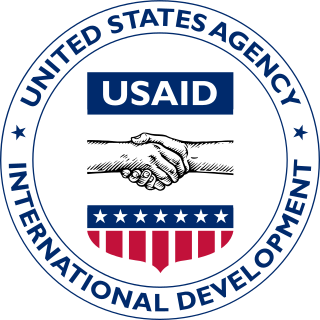
The United States Agency for International Development (USAID) is an independent agency of the United States government that is primarily responsible for administering civilian foreign aid and development assistance. With a budget of over $50 billion, USAID is one of the largest official aid agencies in the world and accounts for more than half of all U.S. foreign assistance—the highest in the world in absolute dollar terms.
International Military Education and Training (IMET) is the title of a United States security assistance program, a type of student exchange program.

The Defense Security Cooperation Agency (DSCA) is an agency within the United States Department of Defense (DoD) which provides financial and technical assistance, transfer of defense materiel, training and services to allies, and promotes military-to-military contacts.

The United States under secretary of defense for policy (USDP) is a high level civilian official in the United States Department of Defense. The under secretary of defense for policy is the principal staff assistant and adviser to both the secretary of defense and the deputy secretary of defense for all matters concerning the formation of national security and defense policy.
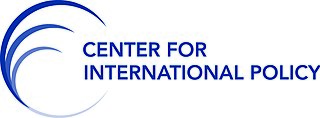
The Center for International Policy (CIP) is a non-profit foreign policy research and advocacy think tank with offices in Washington, D.C., and New York City. It was founded in 1975 in response to the Vietnam War. The Center describes its mission as promoting "cooperation, transparency and accountability in global relations. Through research and advocacy, our programs address the most urgent threats to our planet: war, corruption, inequality and climate change."

The Foreign Assistance Act is a United States law governing foreign aid policy. It outlined the political and ideological principles of U.S. foreign aid, significantly overhauled and reorganized the structure of U.S. foreign assistance programs, legally distinguished military from nonmilitary aid, and created a new agency, the United States Agency for International Development (USAID) to administer nonmilitary economic assistance programs. Following its enactment by Congress on September 4, 1961, President John F. Kennedy signed the Act into law on November 3, 1961, issuing Executive Order 10973 detailing the reorganization.

Military relations between Israel and the United States have been extremely close, reflecting shared security interests in the Middle East. Israel is designated as a major non-NATO ally by the U.S. government. A major purchaser and user of U.S. military equipment, Israel is also involved in the joint development of military technology and it regularly engages in joint military exercises with United States and other forces. The relationship has deepened gradually over time, though, as Alan Dowty puts it, it was "not a simple linear process of growing cooperation, but rather a series of tendentious bargaining situations with different strategic and political components in each."

In the years after the September 11, 2001 attack on the World Trade Center in New York City, Yemen became a key site for U.S. intelligence gathering and drone attacks on Al-Qaeda. According to the 2012 U.S. Global Leadership Report, 18% of Yemenis approved of U.S. leadership, with 59% disapproving and 23% uncertain. According to a February 2015 report from the Congressional Research Service, U.S. officials considered Al-Qaeda in the Arab Peninsula the Al-Qaeda affiliate "most likely to attempt transnational attacks against the United States."
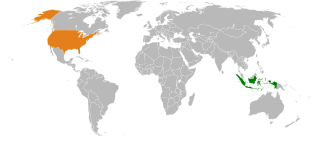
Indonesia and the United States established diplomatic relations in 1949. Relations are generally strong and close. Both are republics and recognize the strategic importance of their counterpart.
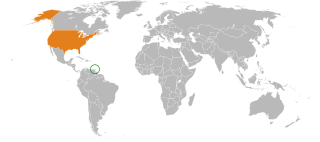
Trinidad and Tobago – United States relations are bilateral relations between Trinidad and Tobago and the United States.
United States Security Assistance Organizations (SAOs) are U.S. government military and civilian personnel stationed in foreign countries to manage security assistance and other military programs. SAOs are closest to these programs' operation and have the closest contact with host-country militaries.
The United StatesForeign Military Financing (FMF) program provides grants and loans to friendly foreign governments to fund the purchase of American weapons, defense equipment, services and training. The program was established through the 1976 Arms Export Control Act and is overseen by the Office of Security Assistance within the Bureau of Political-Military Affairs of the United States Department of State and executed by the Defense Security Cooperation Agency (DSCA) of the United States Department of Defense. The program's stated aims are to be promote U.S. interests by "ensuring coalition partners and friendly partner governments are equipped and trained to pursue common security objectives by contributing to regional and global stability, strengthening military support for democratically-elected governments, fighting the War on Terror, and containing other transnational threats including trafficking in narcotics, weapons and persons."

The United States Army Security Assistance Command (USASAC) – "the 'Army's Face to the World'" - implements security assistance programs, including Foreign Military Sales (FMS) of defense articles and services to eligible foreign governments. In addition, USASAC is responsible for the US Army's security assistance information management and financial policy and provides logistics guidance to the army's security assistance community. The command also supports the U.S. government's emergency assistance, humanitarian relief, and Operations Other Than War, including peacekeeping operations by the United Nations. The USASAC traces its origins to the Army's technical service era, and was designated a major subordinate command (MSC) of the U.S. Army Materiel Command (AMC) in 1975. Since its formation, USASAC has supported major US military operations and supported international peacekeeping and humanitarian efforts. The USASAC's motto is "Strength in Cooperation."
Offsets are compensatory trade agreements, reciprocal trade agreements, between an exporting foreign company, or possibly a government acting as intermediary, and an importing entity. Offset agreements often involve trade in military goods and services and are alternatively called: industrial compensations, industrial cooperation, offsets, industrial and regional benefits, balances, juste retour or equilibrium, to define mechanisms more complex than counter-trade. Counter-trade can also be considered one of the many forms of defense offset, to compensate a purchasing country. The incentive for the exporter results from the conditioning of the core transaction to the acceptance of the offset obligation.

United States foreign aid, also known as US foreign assistance consists of a variety of tangible and intangible forms of assistance the United States gives to other countries. Foreign aid is used to support American national security and commercial interests and can also be distributed for humanitarian reasons. Aid is financed from US taxpayers and other revenue sources that Congress appropriates annually through the United States budget process. It is dispersed through "over 20 U.S. government agencies that manage foreign assistance programs," although about half of all economic assistance is channeled through the United States Agency for International Development (USAID).
The Foreign Military Sales (FMS) is a security assistance program of the of the United States government to facilitate the purchase of U.S. arms, defense equipment, design and construction services, and military training to foreign governments. The Foreign Military Sales program was established through the 1976 Arms Export Control Act. FMS allows foreign governments to avoid contracts risks caused by dealing with arms industry by purchasing from the United States Department of Defense through the Defense Security Cooperation Agency (DSCA).
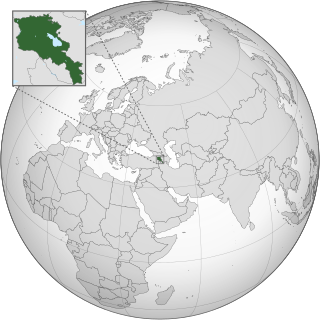
The Kansas–Armenia National Guard Partnership is one of 25 European partnerships that make-up the U.S. European Command State Partnership Program and one of 88 worldwide partnerships that make-up the National Guard State Partnership Program. The Republic of Armenia signed a bilateral affairs agreement with the U.S. Department of Defense and the state of Kansas in 2003 establishing the Kansas-Armenia State Partnership Program. Former Kansas Governor Kathleen Sebelius subsequently signed a proclamation declaring June 18, 2004, as Kansas-Armenia Partnership Day.

The Foreign Military Sales Act of 1968, Pub. L.Tooltip Public Law 90–629, 82 Stat. 1320-2, enacted October 22, 1968, was supplemental legislation to the Arms Control and Disarmament Act of 1961 and the Foreign Assistance Act of 1961. The Act discloses the United States commitment and sustainment to a world free from the dangers of armaments and the scourge of war.

The Foreign Military Sales Act of 1971, Pub. L.Tooltip Public Law 91–672, 84 Stat. 2053, enacted January 12, 1971, was created as an amendment to the Foreign Military Sales Act of 1968. The Act of 1971 established declarations to promote international peace and national security for economic, political, and social progress. The declaration provided coordination for international armament appropriations meeting the objectives of the Nixon Administration's foreign policy.

The military relations between Pakistan and the United States have been present since the two established diplomatic relations in 1947. The United States and Pakistan's military have historically close ties and it was once called "America's most allied ally in Asia" by Dwight D. Eisenhower, reflecting shared interests in security and stability in South Asia, Central Asia as well as in regions covering Eastern Europe.












